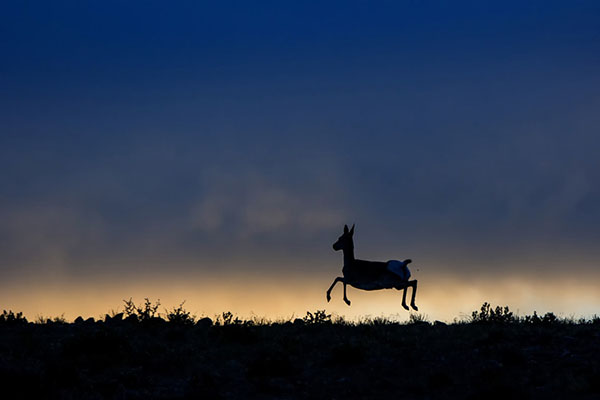
A Tibetan gazelle gallops at dawn in Ngari Prefecture, Tibet. This creature plays an important role in the plateau’s ecosystem.[Photo by Bain Cheng/For chinadaily.com.cn]
An increasing number of people around the country are curious about environmental issues, and photographers are also focusing on the subject. Their work transports viewers into a world far removed from life in urban areas, and inspires people to appreciate the wonders of nature.
Bain Cheng
“I will never forget those days of dehydration and intense efforts just to get a nice shooting spot in such a dry environment under excessive sun exposure, which even got me kidney stones.”
-- Nature photographer: Bain Cheng
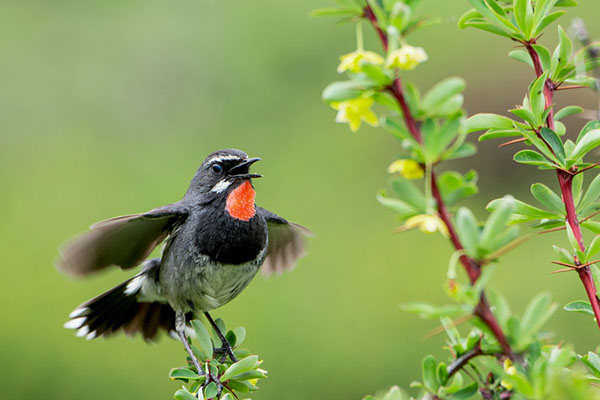
A white-tailed rubythroat sings in Bai-ma Mountain Reserve of Yunnan province.[Photo by Bain Cheng/For chinadaily.com.cn]

Parnassius is one of endangered species in the world. [Photo by Bain Cheng/For chinadaily.com.cn]
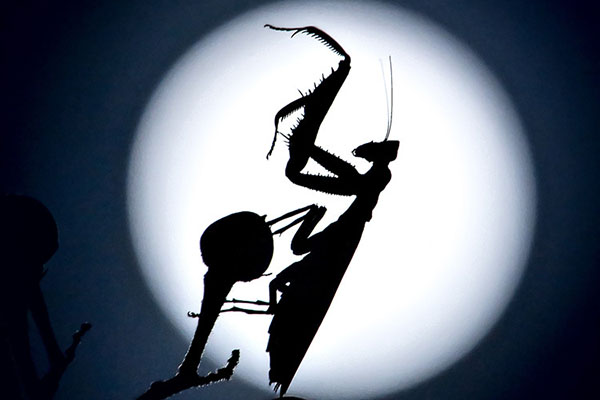
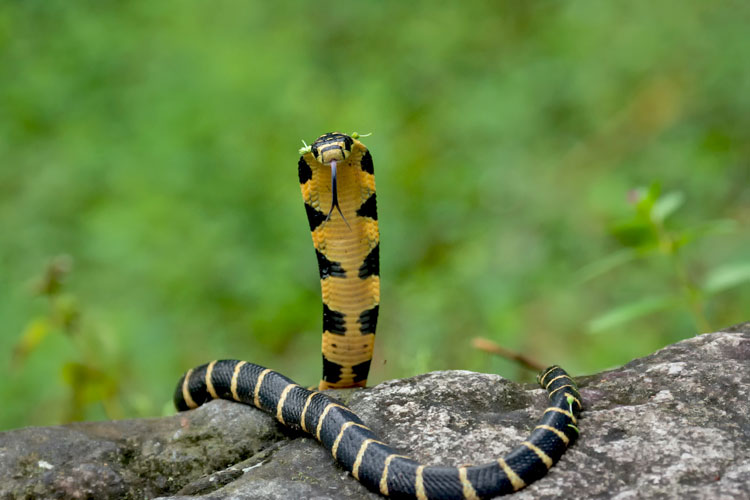
King cobra holds its head high. The snake can grow to as long as 6 meters and is one of the most venomous reptiles.[Photo by Bain Cheng/For chinadaily.com.cn]

A red lacewing butterfly in Motuo county of Tibet. This subtropical zone, through which the Yarlung Zangbo River flows, is the habitat of hundreds of butterflies.[Photo by Bain Cheng/For chinadaily.com.cn]
Zhang Haihua
“In the past three years, I often spent weekend nights in the spring and summer photographing frogs,snakes, insects and so on in remote mountains. Unconsciously, I have taken pictures of more than 20 different frogs in Ningbo, among which some are even newly recorded in Ningbo.”
-- Zhang Haihua, photographer from Ningbo, Zhejiang province.

A Fujian Green pitviper gazes fiercely in the outskirts of Ningbo, in Southeast China’s Zhejiang province.[Photo by Zhang Haihua/For chinadaily.com.cn]

The Beijing Gold-striped Pond frog, above, is a skillful swimmer, not only making the standard breaststroke, but also swimming underwater for a long distance. They are also famous for jumping, sometimes leading more than one meter away. When frightened, they jump into the water with a beautiful display of fancy diving. [Photo by Zhang Haihua/For chinadaily.com.cn]
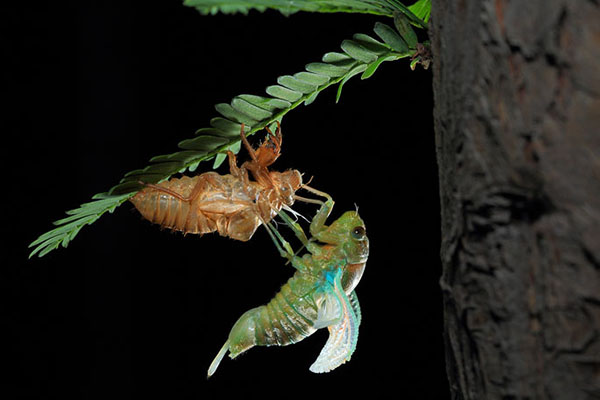
A cicada that has just peeled off its shell, dries its wings and gets ready for flight. The cicada has for many years symbolized the resurgence and immortality for the Chinese people. Its life cycle extends from a larva to a cicada pupa and at last into a winged insect.[Photo by Zhang Haihua/For chinadaily.com.cn]
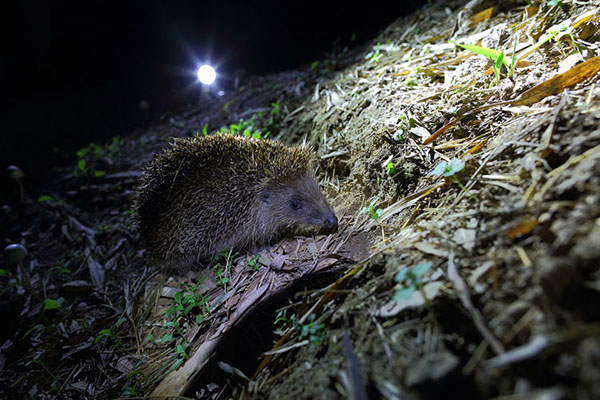
A hedgehog searches for food in the night.[Photo by Zhang Haihua/For chinadaily.com.cn]
Sun Jinqiang
“I think that it’s my unavoidable responsibility as a photographer to vividly present and spread the idea of ecological conservation and love of life.”
-- Sun Jinqiang, a wildlife photographer from Shaanxi province.

A golden snub-nosed monkey sits in the snow.[Photo by Sun Jinqiang/For chinadaily.com.cn]
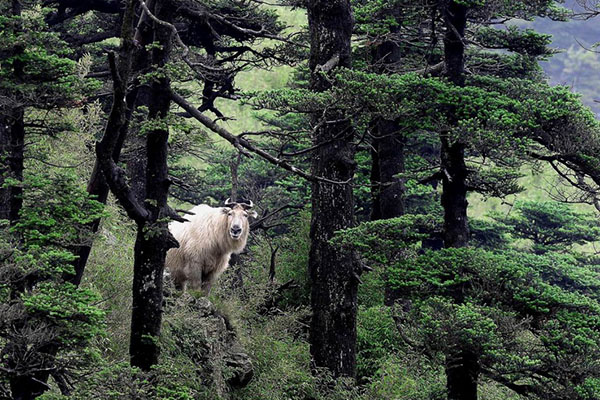
A male takin seeks a mate in a mountain forest in the Qinling Mountains, a rugged range dividing north and south China. Living high in the mountains, above 2,000 meters, takins are often in heat from late June to late July and mate during this period. The Qinling takin is an animal unique to the Qinling Mountains. Its golden coat mixed with white sees locals call them “white sheep” or “Yangzi”. [Photo by Sun Jinqiang/For chinadaily.com.cn]

A crested ibis lands to feed her baby birds.[Photo by Sun Jinqiang/For chinadaily.com.cn]
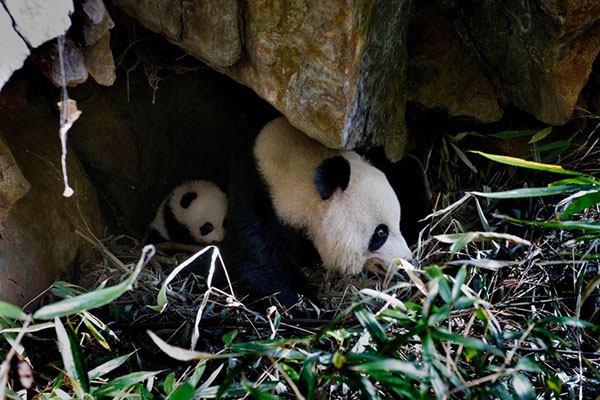
A baby panda sits beside her mother at the mouth of a cave. Pandas usually mate in mid-March and give birth in August. The habitat of Qinling giant pandas encompasses nine counties in Shaanxi province — Foping, Yangxian, Taibai, Zhouzhi, Ningxia, Liuba, Chenggu, Ningqiang and Fengxian. According to research, the Qinling giant panda has a population of only around 300, and is rare and precious.[Photo by Sun Jinqiang/For chinadaily.com.cn]
Xu Yongchun
“I stepped into snapping wildlife by accident. In the summer of 2010, I was taking pictures at the Summer Palace when a charming blue thing passed by like a flash. Eventually, it turned out to be a beautiful kingfisher. It was so surprising that a kingfisher should also live in the Summer Palace! I was totally lost in that extraordinary scenario and have begun my journey of shooting wild birds from then on. “
-- Xu Yongchun
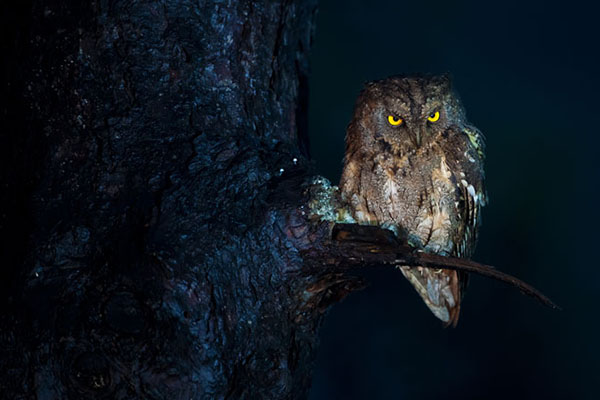
Oriental Scops Owl[Photo by Xu Yongchun/For chinadaily.com.cn]

Red-bellied Eagle[Photo by Xu Yongchun/For chinadaily.com.cn]
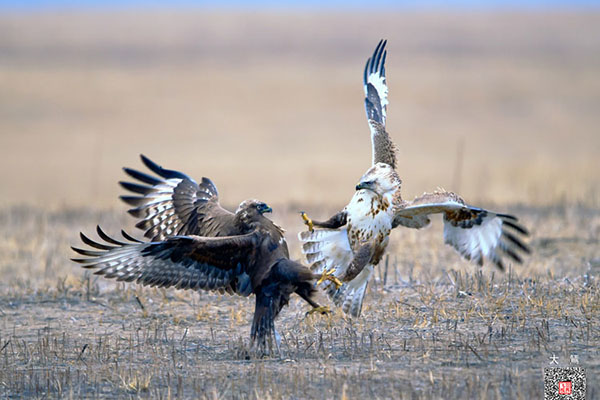
Upland Buzzard[Photo by Xu Yongchun/For chinadaily.com.cn]

Snowy Owl[Photo by Xu Yongchun/For chinadaily.com.cn]

Chinese Grey Shrike[Photo by Xu Yongchun/For chinadaily.com.cn]
Dong Lei
“I started my journey in 2004 when I began to photograph birds and made a plan to shoot dwarf blue sheep in Batang county, Sichuan province. I’ve loved nature and wildlife since I was little, so wildlife photography has always been on my radar. “
-- Dong Lei
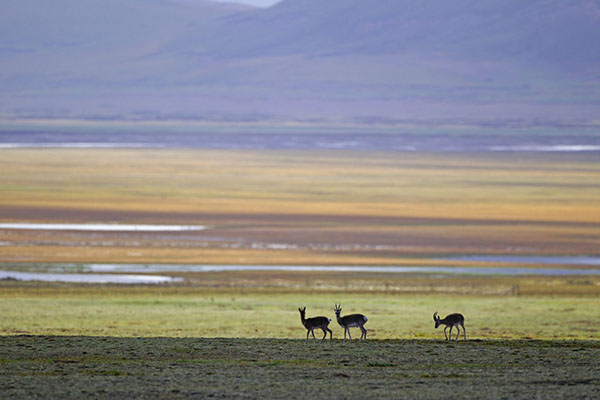
Three Tibetan gazelles roam in the grassland of Sanjiangyuan National Reserve of Zhiduo county in the northwest China’s Qinghai province.[Photo by Dong Lei/For chinadaily.com.cn ]

Two Little Owl (Athene noctua) nestlings take a sunbath in their stone nest in Jiuzhi county of the northwest China’s Qinghai province.[Photo by Dong Lei/For chinadaily.com.cn]

A group of Black-necked cranes, a species exclusive to the Qinghai-Tibetan Plateau, fly over the mountain in Basomtso Lake of Tibet.[Photo by Dong Lei/For chinadaily.com.cn]

Flowers of Meconopsis betonicifolia bloom at the foot of Mount Namjagbarwa in the area of the Yarlung Zangbo Grand Canyon, east of Tibet.[Photo by Dong Lei/For chinadaily.com.cn]
Zuo Lingren
“Don’t choose it as your career since you can never predict the difficulty, danger and earnings until you are out there. For those who have a true passion, I only have one thing to say: always remember why you start.”
-- Zuo Lingren
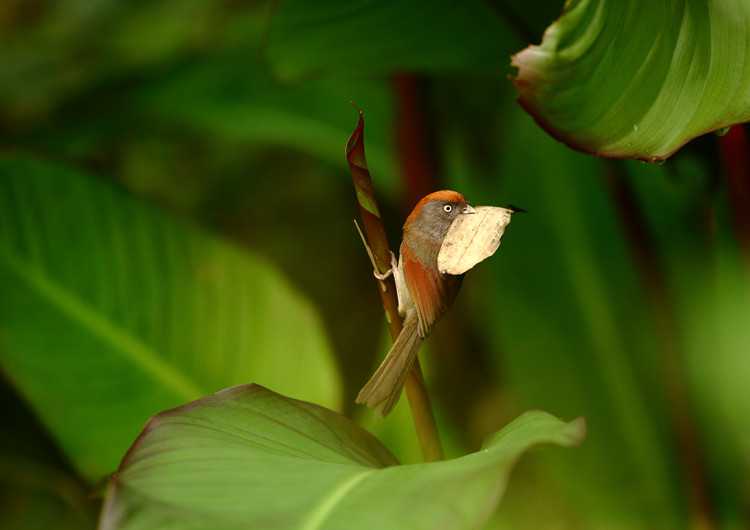
An Ashy-throated Parrotbill carries a leave in its mouth in Laojunshan Natural Reserve of southwest China’s Sichuan province. [Photo by Zuo Lingren/For chinadaily.com.cn]
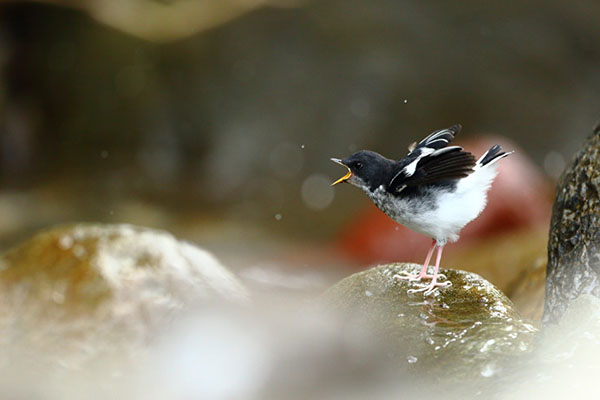
Little Forktail nestling twitters for feeding from parents on a rock in a stream in Laojunshan Reserve of southwest China’s Sichuan province. This kind of bird lives only in clean water and has thus become a parameter of water quality.[Photo by Zuo Lingren/For chinadaily.com.cn]
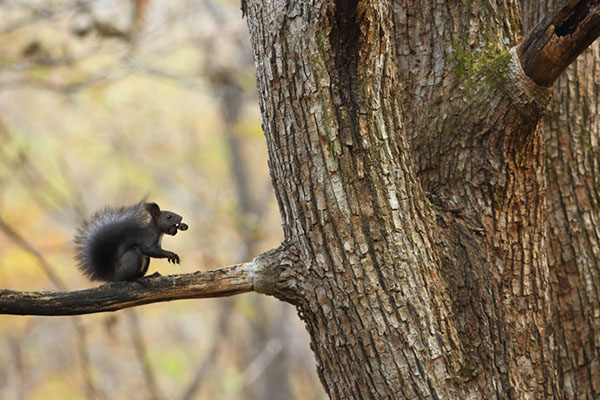
North squirrel dines on pecan on a tree in the forest in Wangqing county of northeast China’s Jilin province. [Photo by Zuo Lingren/For chinadaily.com.cn]

Two Rusty laughingthrushes enjoy a moment of peace perched on a branch in Laojunshan Reserve in southwest China’s Sichuan province. The species like to gather and can be easily spotted following their noisy twitters. [Photo by Zuo Lingren/For chinadaily.com.cn]
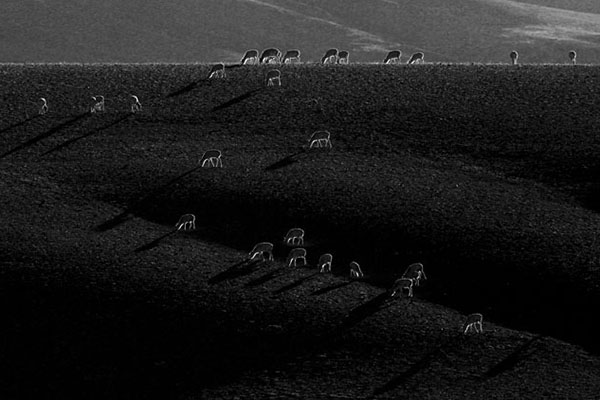
Group of Tibetan gazelle in the valley of Qiangtang Natural Reserve in Tibet. [Photo by Zuo Lingren/For chinadaily.com.cn]
